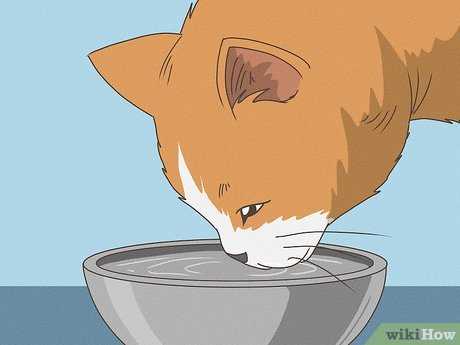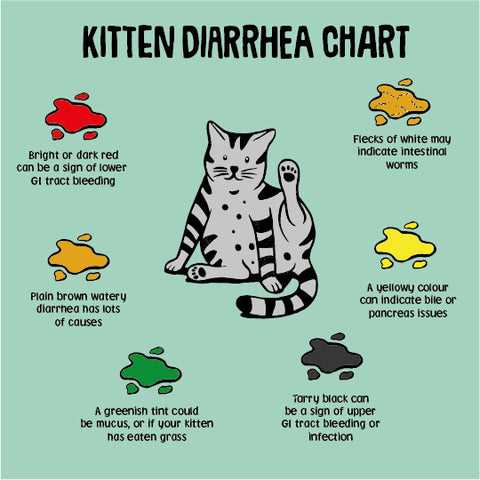Offering a bland diet is the first step. Cooked white rice mixed with boiled chicken can help settle the stomach. Avoid adding any spices or seasonings. Gradually reintroducing regular food after a day or two is key.
Hydration matters immensely. Ensure fresh water is available at all times. Adding an electrolyte solution specifically designed for pets can support hydration.
Monitoring the frequency and consistency of bowel movements is crucial. If symptoms persist beyond 24 hours or worsen, a visit to the veterinarian becomes necessary for a thorough examination and possible treatments.
Probiotics can be beneficial. These supplements introduce healthy bacteria to the digestive system, aiding in recovery. Consult a vet for recommendations on the best options.
Stress reduction plays a significant role. Creating a calm environment can alleviate anxiety that may contribute to digestive issues. Regular play and interaction also help keep moods stable.
Identifying the Causes of Diarrhea in Cats
Parasites are a common issue leading to loose stools. Regular fecal tests can help detect these unwelcome guests. Deworming treatments should be administered as needed based on veterinary advice.
Dietary changes often trigger gastrointestinal upset. Abrupt shifts in food types or ingredients can disrupt digestion. Monitoring for sensitivity to specific proteins or additives may reveal underlying issues.
Illness and Infections
Bacterial infections, viruses, or other illnesses can also be culprits. Keeping track of overall health and any accompanying symptoms, such as vomiting or lethargy, is vital. A trip to the veterinarian for diagnostic tests might be necessary.
Stress Factors
Environmental changes can contribute to gastrointestinal disturbances. New pets, moving to a different home, or loud noises can cause anxiety. Observing behavior changes can provide insight into potential stressors.
Maintaining a consistent routine and safe environment helps alleviate anxiety-related issues. Offering a calm space for relaxation may also reduce stress-induced digestive problems.
Assessing the Severity of Your Cat’s Condition
Monitor hydration levels closely. Signs of dehydration include dry gums, sunken eyes, and lethargy. Offer fresh water frequently, and consider providing an electrolyte solution designed for pets if dehydration is suspected.
Signs to Watch For
Note changes in behavior or appetite. A decrease in energy or refusal to eat can indicate a more serious issue. Keep track of the frequency and consistency of bowel movements; persistent loose stools or blood presence warrants immediate veterinary attention.
Comparative Severity Chart
| Symptom | Severity Level | Action Required |
|---|---|---|
| Occasional soft stool | Low | Monitor; maintain hydration |
| Frequent loose stool | Moderate | Consult a veterinarian; check for dehydration |
| Blood in stool | High | Seek immediate veterinary care |
| Signs of dehydration | Critical | Urgent veterinary intervention required |
Keep a record of symptoms and any dietary changes, as this information can assist a veterinarian in diagnosing underlying issues. Prompt attention to severe signs is critical for recovery.
Proper Hydration Techniques for Diarrheic Cats
Encourage water intake by offering fresh, clean water in a shallow dish. Cats often prefer drinking from wide bowls, which prevent whisker fatigue. Change the water multiple times a day to maintain freshness and appeal.
Introduce a pet water fountain. The flowing water can entice even the most finicky felines to drink more, as many prefer the taste of moving water over stagnant options.
Consider adding electrolyte solutions specifically designed for pets. These can help replenish lost fluids and minerals. Follow the dosage instructions carefully to avoid over-concentration.
Incorporate wet food into the diet. This type of nourishment contains higher moisture content, contributing to overall hydration. Gradually mix wet food with dry to ease the transition.
Offer ice cubes or ice chips as a fun alternative. Many enjoy batting at them, and licking the ice provides hydration while stimulating playfulness.
Monitor water intake closely. Signs of dehydration include dry gums, lethargy, and decreased skin elasticity. If any of these symptoms arise, consult a veterinarian immediately.
Appropriate Dietary Adjustments for Recovery

Introduce a bland diet as a first step. Cooked chicken (no skin or bones) and plain white rice make an excellent combination. Gradually increase the amount over a few days, monitoring how digestion reacts. If everything seems fine, slowly transition back to regular meals.
Probiotics and Fiber

Consider adding probiotics to the meals. These beneficial bacteria can help restore the balance in the digestive system. Look for products specifically designed for felines. Additionally, incorporating a small amount of canned pumpkin can provide fiber, which aids in firming up stools.
High-Quality Commercial Diets
Opt for high-quality commercial diets that are easily digestible. These specially formulated options often contain lower fat and higher digestibility, suitable for sensitive stomachs. Brands that focus on gastrointestinal health are particularly beneficial. For those interested in understanding genetic factors influencing health, checking out the best dna test for cats might be worthwhile.
Always ensure fresh water is available alongside any dietary adjustments. This keeps hydration levels in check during recovery. Regular monitoring of how meals are received plays an important role in the healing process.
When to Consult a Veterinarian for Treatment
If symptoms persist for more than 24 hours or worsen, seeking veterinary assistance is crucial. Signs like blood in stool, severe lethargy, or vomiting alongside gastrointestinal upset indicate a need for professional evaluation.
Specific Indicators for Immediate Attention
Presence of dehydration, noticeable weight loss, or any drastic behavioral change requires urgent care. If the furry friend is a kitten or senior, the urgency escalates, as these age groups are more susceptible to complications.
Understanding Underlying Conditions
Persistent gastrointestinal issues may signal infections, parasites, or more serious conditions like inflammatory bowel disease. A thorough examination can identify these underlying issues, ensuring proper management and recovery.
Monitoring Recovery and Preventing Recurrence
Regular observation is key. Keeping an eye on any changes in behavior, appetite, and litter box habits allows for early detection of potential issues. Documenting these observations can help track progress and identify patterns.
Establish a feeding schedule with small, frequent meals to ease digestion. Gradually reintroducing regular food can help assess tolerance. Avoid sudden changes to the diet during recovery.
- Check for consistency in stool; it should gradually firm up.
- Monitor hydration levels; ensure fresh water is available at all times.
- Watch for any signs of lethargy or discomfort.
Preventing future episodes involves maintaining a stable environment. Regularly cleaning food and water dishes minimizes exposure to harmful bacteria. Ensure a balanced diet rich in nutrients, and avoid sharing human food that might disrupt digestion.
Regular veterinary check-ups are recommended to address underlying health issues. In case of recurrent issues, further diagnostic testing may be necessary to pinpoint the problem.
For a fun distraction during recovery, check out this guide on how to cook ravioli in a skillet.






